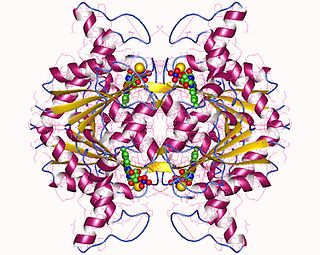| 2-(S)-hydroxypropyl-CoM dehydrogenase | |||||||||
|---|---|---|---|---|---|---|---|---|---|
| Identifiers | |||||||||
| EC no. | 1.1.1.269 | ||||||||
| Databases | |||||||||
| IntEnz | IntEnz view | ||||||||
| BRENDA | BRENDA entry | ||||||||
| ExPASy | NiceZyme view | ||||||||
| KEGG | KEGG entry | ||||||||
| MetaCyc | metabolic pathway | ||||||||
| PRIAM | profile | ||||||||
| PDB structures | RCSB PDB PDBe PDBsum | ||||||||
| Gene Ontology | AmiGO / QuickGO | ||||||||
| |||||||||
In enzymology, a 2-(S)-hydroxypropyl-CoM dehydrogenase (EC 1.1.1.269) is an enzyme that catalyzes the chemical reaction
- 2-(S)-hydroxypropyl-CoM + NAD+ 2-oxopropyl-CoM + NADH + H+
Thus, the two substrates of this enzyme are 2-(S)-hydroxypropyl-CoM and NAD+, whereas its 3 products are 2-oxopropyl-CoM, NADH, and H+.
This enzyme belongs to the family of oxidoreductases, specifically those acting on the CH-OH group of donor with NAD+ or NADP+ as acceptor. The systematic name of this enzyme class is 2-[2-(S)-hydroxypropylthio]ethanesulfonate:NAD+ oxidoreductase. This enzyme is also called 2-(2-(S)-hydroxypropylthio)ethanesulfonate dehydrogenase.






